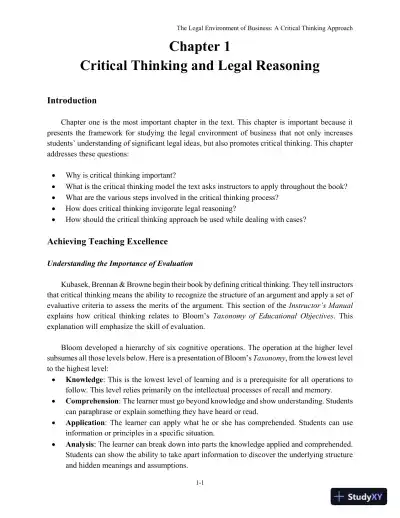Page 1

Loading page ...
The Legal Environment of Business: A Critical Thinking Approach, 8th Edition Solution Manual makes textbook problem-solving simple, with detailed answers that make learning fun.

Loading page ...
This document has 299 pages. Sign in to access the full document!